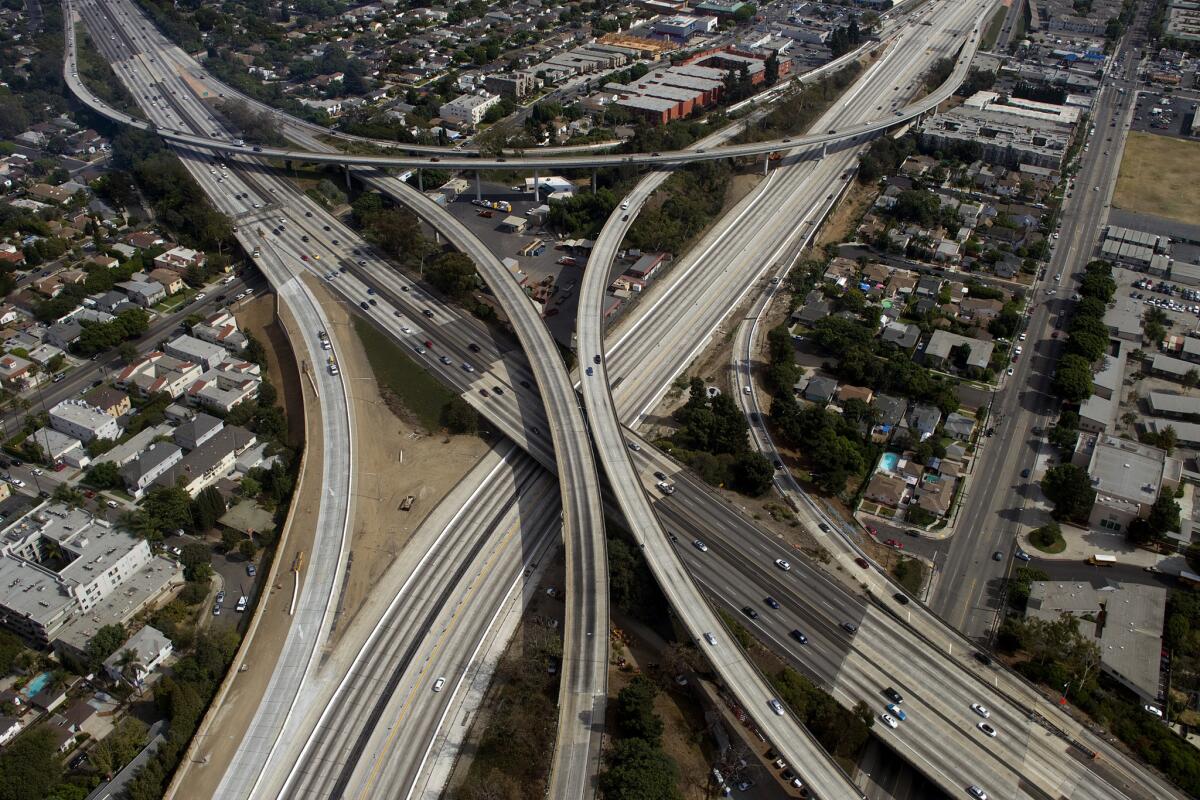Treat every day like âCarmageddonâ

In 2011, the closure of the 405 Freeway in West Los Angeles for an entire weekend spawned the term âCarmageddonâ in anticipation of a colossal traffic nightmare. It didnât happen. This month, Caltrans closed the 405âs northbound offramp to heavily used Sunset Boulevard, which will last four months. Carmageddon? Nope. Last weekend, Caltrans shut down a four-mile stretch of the 405 in Orange County. Carmageddon? Nope. And over the Labor Day weekend, crews are scheduled to close the San Francisco-Oakland Bay Bridge for five days to link the new east span to Interstate 80. Carmageddon? Probably not. Pretty amazing considering that Los Angeles and San Francisco are Nos. 1 and 3 on a list of the most congested cities in the United States.
My job is to analyze traffic, gathering data mainly for the media so news outlets can see the effects of closures. I run the numbers every time thereâs a major one. So I have a good idea why these recent cases didnât turn into disasters, and how we can use lessons from them to permanently change traffic patterns.
These full highway closures are cost effective for contractors that work on the projects and ultimately for the taxpayers who pay for them. Crews can get more work done in a 54-hour work cycle than in three months of nighttime lane closures. We will see more of these in the future, not fewer, as cities rebuild their aging infrastructure using the most cost-effective and best tools available.
SLIDE SHOW: 10 reasons to salute L.A.âs transportation future
We also have smarter cars and smarter people using technology to steer clear of major closures and congestion. Contractors and their communications teams are also getting smarter about marketing the closures to inform the public. Who doesnât love the fun names given to these events â last weekendâs Bridge Bash/Orange Jam or Seattleâs Viadoom in 2011?
Crowd-sourcing technology is making a big difference. Drivers are using traffic apps that deliver real-time information and include congestion alerts, closure alerts and driver alerts. More drivers talk over Twitter; more transportation agencies tweet important route-changing data.
And itâs not just the drivers who are more connected; itâs also the cars. By 2019, Strategy Analytics, a market research firm, predicts nearly 50% of all vehicles worldwide will have embedded navigation. Even if you donât know that thereâs a major closure on your route, your car will.
Because my company also supplies historical traffic data to transportation companies and private construction and traffic companies worldwide and offers a traffic app, we have a vested interest in everyoneâs success. (We were not involved in the closures mentioned here.) We see an increase in traffic app downloads before weekends and even more before Memorial Day, Labor Day and Thanksgiving. Thatâs the way it should be â engaged drivers determined to avoid congestion.
What if we acted as if every day were a potential Carmageddon? What if we approached each day engaged and determined to avoid congestion? What if we chose transit options other than driving alone just one more day than we do now? Or vanpool? Or tried casual carpooling? The technology is there and very accessible. If more people knew how to use it, it would make a difference everywhere.
The data show where thereâs a will, thereâs a way. For example, Day 2 of the July BART strike in San Francisco was significantly better than Day 1. I talked to one reporter who said, âThat four-hour commute that first day put me on a friendâs couch in San Francisco for the next three [days].â
No one is saying we should all couch surf, but we have the power to change congestion for good, not just a weekend in August. Technology is calling. Itâs time to pick up your smartphone.
Jamie Holter is a traffic analyst at an international traffic data and driver services company.
More to Read
A cure for the common opinion
Get thought-provoking perspectives with our weekly newsletter.
You may occasionally receive promotional content from the Los Angeles Times.










